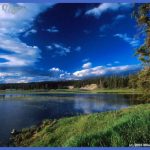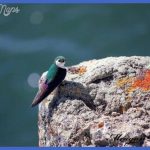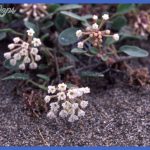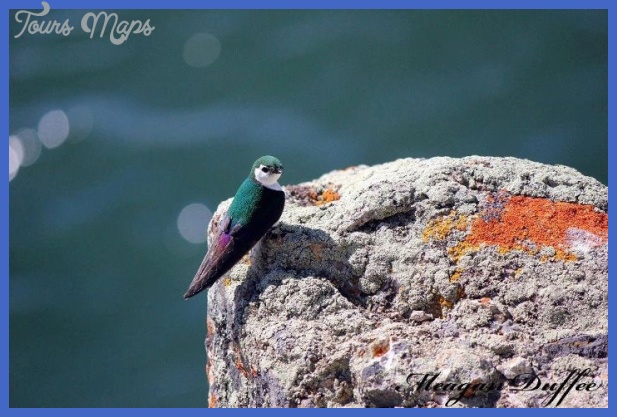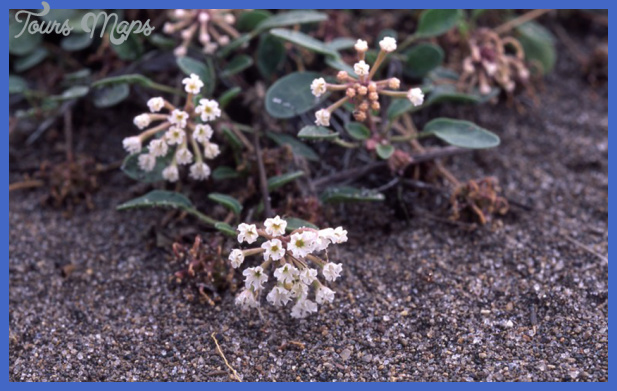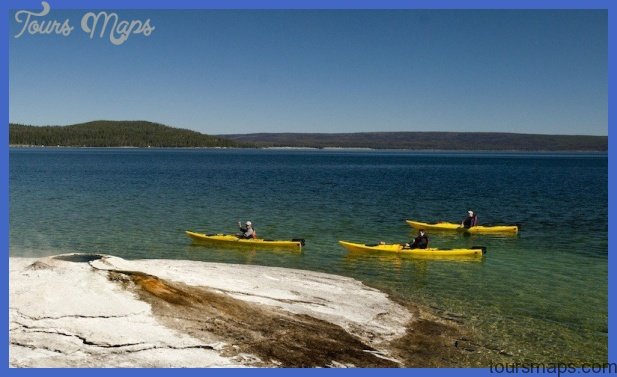The American white pelican (Pelecanus erythrorynchos) can be 5 feet (1.5 m) long and have a wingspan of 9 feet (2.7 m). Park Service regulations protect the pelican’s nesting place (the lake’s Molly Islands) from approach by any watercraft. A much smaller fish-eating bird is the osprey (Pandion hali-aetus). Its body is black or brown above and white below, with a black patch under the crook of its wing and powerful talons for catching fish. One can see osprey nests on high pillars or tall pines in the Grand Canyon of the Yellowstone. The 2003 Frank Island fire destroyed many osprey nests. The California gull (Larus californicus) nests on the islands of inland lakes, including Yellowstone Lake, and winters along the Pacific coast, turning from a brownish color when young to all white underneath and gray above as it matures. The park has its share of Canada geese (Branta canadensis), which have become something of a pest around northern U.S. cities. This large goose is characterized by its black neck and white chin strap and its deep honking. Small Mammals of the Forest If something is flying over your head at dusk, it may be a little brown bat (Myotis lucifugus). Three to 4 inches (7-10 cm) long, this bat finds moths, mosquitoes, and other insects at night by echolocation (a sort of radar).
It hibernates for about half of the year. Yellow-bellied marmots Pelican colony Around the boardwalks at Old Faithful Village or at the Yellowstone Canyon, you’ll see the much larger yellow-bellied marmot or rockchuck (Marmota flaviventris), whose low-slung body may be over 2 feet (0.7 m) long. The marmot digs burrows and spends much time underground but also loves to soak up the sun. Nocturnal rodents are the common deer mouse (Peromyscus maniculatus) and the much larger bushy-tailed woodrat (Neotoma cinerea). This pack rat collects and hoards miscellaneous objects, especially shiny ones. Old Faithful Inn sets up mouse motels, since the concessionaire must follow the park policy of killing no wildlife. The smallest rodent you’re likely to see in wooded areas here is the least chipmunk (Tamias minimus), 7 to 8 inches (18-21 cm) long including the bushy tail it carries straight up as it runs. It’s a gray to reddish brown color with black and white stripes on both the back and face and is known for stung its cheeks with seeds or berries. The way to tell a golden-mantled ground squirrel (Spermophilus lateralis) from a chipmunk is to notice that the squirrel has stripes only on the body. This squirrel is some 4 inches (10 cm) longer than its chipmunk relative and may eat insects as well as vegetable matter. Least chipmunk (left) & Golden-mantled ground squirrel (right).
Along the shores of Yellowstone Lake Photo Gallery
Maybe You Like Them Too
- The Best Cities To Visit in The World
- World’s 10 Best Places To Visit
- Coolest Countries in the World to Visit
- Travel to Santorini, Greece
- Map of Barbados – Holiday in Barbados

